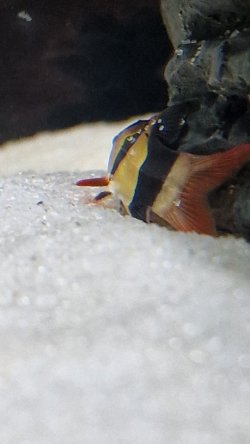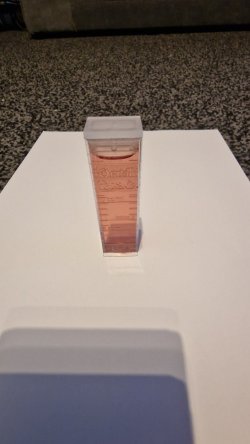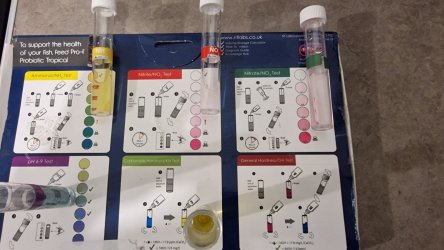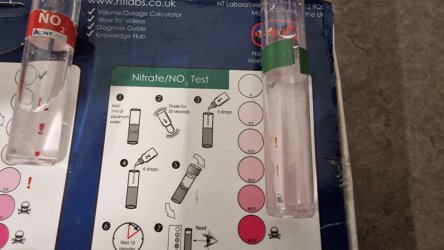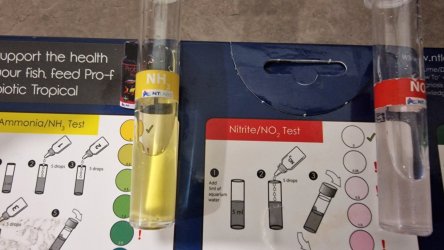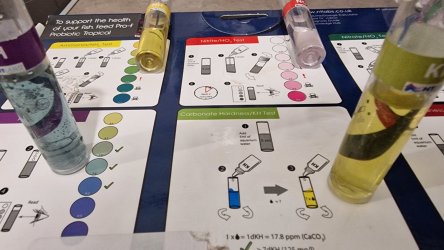BIT OF AN EMERGENCY, Does anyone know what could be wrong with Black fin.....one of my clown loaches, the other 2 are happily swimming around and have teamed up, this one seems to always be on his own, today he's been showing some strange signs, hes always trying to hide, hes been laying on his side to the point where I thought he was dead, im able to catch him and pick him up in my hand without any resistance, the other 2 ive not got a chance of catching by hand, his colours are fine and my water checks out perfectly fine.
Ammonia = 0
Nitrite = 0
Nitrate = 10ppm
KH = 4
PH = 7.5
GH = 11
O2 = between 5 and 8 (sample taken from the bottom of the tank)
This is him right now laying on his side against a rock, those are sand particles on him by the way not white spot, when he does move, they fall off, ive also done an O2 test tonight which checks out fine, all other water tests I did last night and they were all fine, this behaviour has only started this evening.
Video on the way..............once it finishes processing it will be ready to view, I hand caught him and put him in a small pot filled with tank water floating in the tank, I added some tetra crispies and some dried blood worm, he doesnt seem to be interested in either.
Ammonia = 0
Nitrite = 0
Nitrate = 10ppm
KH = 4
PH = 7.5
GH = 11
O2 = between 5 and 8 (sample taken from the bottom of the tank)
This is him right now laying on his side against a rock, those are sand particles on him by the way not white spot, when he does move, they fall off, ive also done an O2 test tonight which checks out fine, all other water tests I did last night and they were all fine, this behaviour has only started this evening.
Video on the way..............once it finishes processing it will be ready to view, I hand caught him and put him in a small pot filled with tank water floating in the tank, I added some tetra crispies and some dried blood worm, he doesnt seem to be interested in either.

